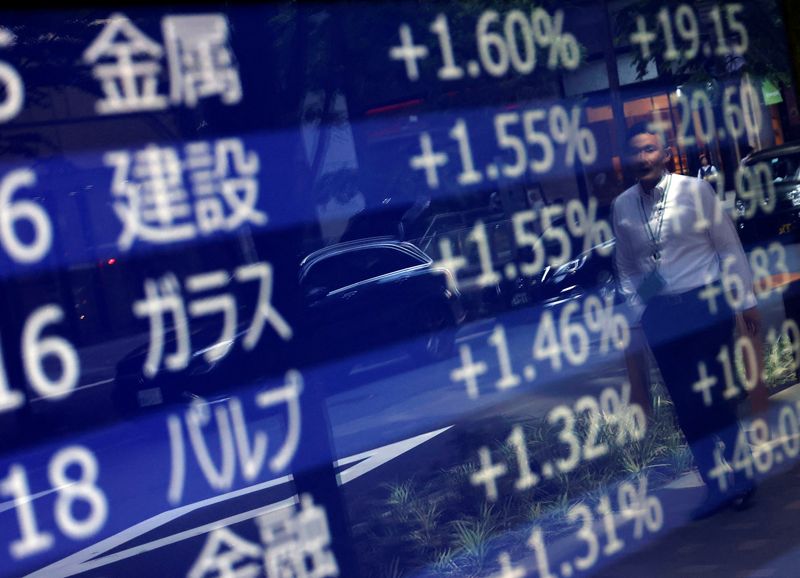By Koh Gui Qing and Dhara Ranasinghe
NEW YORK/LONDON (Reuters) -World stocks rallied to their highest level in more than a year on Wednesday, while the U.S. dollar hit a five-month low, as expectations mounted that key central banks such as the Federal Reserve will start to cut interest rates early next year.
In line with expectations of lower interest rates, the benchmark 10-year Treasury yield fell to a five-month low, while the two-year Treasury yield tumbled to a low not seen in seven months.
Investor hopes that monetary conditions might be loosening boosted the MSCI's gauge of stocks across the globe by 0.46% to a level not seen since October 2022.
On Wall Street, the Dow Jones Industrial Average added 0.21%, while the S&P 500 and the Nasdaq Composite were flat.
European shares edged up 0.21%, with trade subdued given public holidays across the region on Monday and Tuesday.
Analysts said the main risk for markets was that rates might not fall as fast as expected.
"If global equity markets have one Achilles' heel going into January 2024, it is the expectation that the Fed will be methodically and consistently cutting interest rates throughout the year," said Nicholas Colas, Co-founder of DataTrek Research.
The benchmark 10-year Treasury yield fell to 3.793%, and the 2-year yield retreated to 4.2375%. [US/]
Expectations of rate cuts also dragged on the U.S. dollar, which fell 0.51% against a basket of six major currencies to a level last seen on Jul. 27. [USD/]
The jovial mood in world equity markets and a sluggish dollar lifted the euro by 0.54% to $1.1102, more than a four-month peak.
“If the Fed cuts rates because inflation has come so far down that they don’t want policy to unintentionally tighten ... then that’s probably a good scenario,” said Lou Brien, market strategist at DRW Trading in Chicago.
If they cut because of a weakening economy, however, “then the history is kind of harsh” for the economy and the stock market. “The motivation behind the rate cuts is still unknown and is going to be the most important factor,” Brien said.
Market pricing shows a more than 80% chance the Fed is likely to begin cutting rates next March, according to the CME FedWatch tool, with over 150 basis points of easing priced in for all of 2024.
Oil prices slipped as some major shippers returned to the Red Sea (NYSE:SE) - an area disrupted after Yemen's Houthi militant group began targeting vessels earlier this month.
U.S. crude fell 2.02% to $74.04 per barrel and Brent was at $79.6, down 1.81% on the day.
Maersk shares fell more than 4.5%, and other shipping stocks also declined, giving back part of this month's gains that were driven by expectations a Red Sea traffic halt could boost rates.
In Asia, MSCI's broadest index of Asia-Pacific shares outside Japan rose more than 1% to an over four-month high.
China's November industrial profits posted double-digit gains as overall manufacturing improved, data showed, although soft demand continued to constrain business growth expectations, emboldening calls for more macro policy support.

Japan's Nikkei rallied more than 1%, and Hong Kong's Hang Seng Index rose 1.7% in its first trading day after the Christmas and Boxing Day holidays. Chinese blue chips eked out a marginal gain of 0.35%.
Spot gold added 0.5% to $2,077.39 an ounce [GOL/], while Bitcoin jumped rose 2.08% to $43,393.00.
